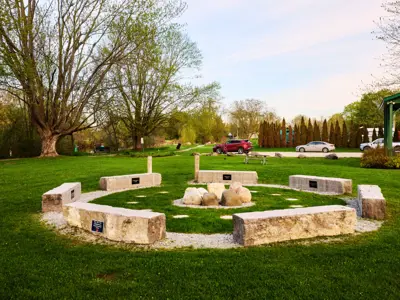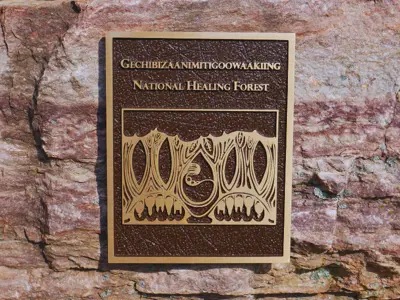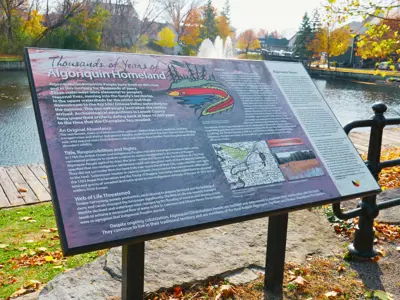Indigenous Reconciliation
The Town of Perth is committed to Indigenous reconciliation and acknowledges that it is located on the traditional unceded territory of the Omàmìwininì (Algonquin) Peoples. We are dedicated to recognizing the rich history and contributions of Indigenous communities in our area and fostering stronger relationships through meaningful actions. As part of our journey toward reconciliation, the Town is dedicated to learning from the Truth and Reconciliation Commission’s Calls to Action and fostering stronger relationships with Indigenous communities. Explore this page to learn more about our initiatives and how we are working towards meaningful reconciliation.
You can also explore the area's shared history by visiting the websites of the Ardoch Algonquin First Nation, the Shabot Obaadjiwan Algonquin First Nation, and the Algonquins of Ontario.

Land Acknowledgement
On October 11, 2022, Town Council unanimously voted to adopt a land acknowledgment statement. This statement is read at all Town Council meetings, marking an important step in recognizing the longstanding presence of Indigenous Peoples who inhabited the land long before Perth was settled;

Indigenous Healing Circle
The Indigenous Healing Circle, located in Last Duel Park, was created in partnership with Lanark County Neighbours for Truth and Reconciliation. This space is a meaningful act of reconciliation, recognizing the keepers of the lands and waterways on this territory. It features seven limestone benches representing the Seven Sacred Teachings: tebwewin (truth), tabasenindizowin (humility), sòngideyewin (courage), nibwàkàwin (wisdom), manàdjìyàn (respect), kijewàdiziwinwin (generosity), and sàgihidiwin (love). The 13 circular stones symbolize the 13 full moons, with a ceremonial fire pit at the center.
The space is open to all for reflection when no ceremonies or workshops are taking place. If you wish to book the space, please contact Karen Szabo at 613-267-3311 ext. 2279. We kindly ask that ceremonies, talking circles, and teachings be Indigenous-led. Fires in the ceremonial pit are only permitted when led by a Firekeeper and with the space booked in advance.

National Healing Forest
Established on Sept. 30, 2018 in partnership with the Lanark County Neighbours for Truth and Reconciliation, the Perth Healing Forest is located in Last Duel Park and serves as a place of reflection, reconciliation, and healing. As part of the broader National Healing Forests initiative, it fosters a connection between Indigenous and non-Indigenous people, helping the community engage with the legacies of the past and work toward a shared future.
A prominent feature of the Perth Healing Forest is the memorial rock installation, dedicated to reconciliation. The space also includes a National Healing Forest display panel, with text presented in both Anishinabemowin and English, emphasizing the importance of language and cultural preservation in the process of healing.
Visitors are invited to spend time in the Perth Healing Forest, reflecting on the importance of reconciliation, learning, and community healing.

Indigenous History Plaque
In an effort to recognize both the rich history and the ongoing presence of Algonquin communities in the region, the Indigenous History Plaque was created and installed in the Tay Basin near the Crystal Palace. The project was led by the community volunteer group Lanark County Neighbours for Truth and Reconciliation, working in close partnership with elders from the Ardoch Algonquin First Nation and the Shabot Obaadjiwan First Nation, who served as key advisers.
The plaques, titled "Thousands of Years of Algonquin Homeland," provides a beautifully designed and detailed account of the lives and culture of the Algonquin people prior to European contact. It also highlights the ongoing impacts of colonialism on both the natural world and the Algonquin people themselves. This plaque is a significant step in recognizing the longstanding and continued connection of the Algonquin people to this land.
Contact Us
Town of Perth
Town Hall
80 Gore Street East
Perth, Ontario
K7H 1H9
Telephone: (613) 267-3311
Fax: (613) 267-5635
Email
